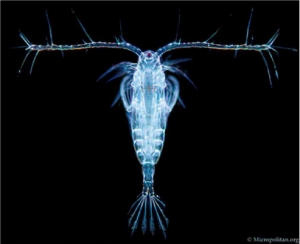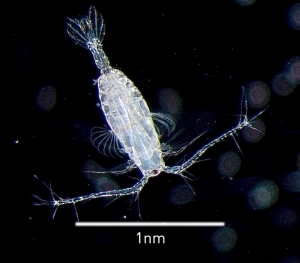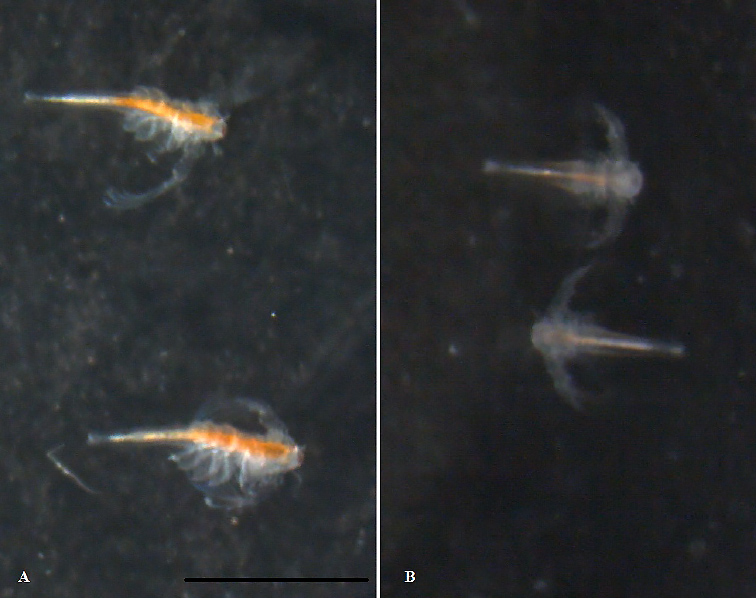
Photo of Acartia tonsa: the antennae are mainly used for balancing. Swimming is mainly achieved using the appendages on the underside of the body.
Aquaculture involves the cultivation of aquatic organisms such as fish, crustaceans, molluscs and aquatic plants. It represents an alternative solution to over-fishing and the disappearance of certain aquatic organisms that are sought-after due to the growing need for seafood.
In 2018, global production from aquaculture (source: FAO) reached 82.1 million tonnes of aquatic animals, 32.4 million tonnes of aquatic algae and 26,000 tonnes of pearls and ornamental shellfish, bringing the total to an all-time high of 114.5 million tonnes.
Despite worldwide progress in the field of marine aquaculture, this sector still has plenty of room for improvement (in terms of economic growth), but sometimes suffers from a poor image linked to the negative environmental impacts of aquaculture under the old production methods.
This increase calls for production control of classic and emerging marine species at all stages of rearing, and in particular the critical initial phase: the larval stage. To meet demand for fish fry, crustacean post-larvae or shellfish spat, hatcheries need to optimize their production performance during this phase.
Zooplankton and especially copepods are among the natural prey of fish larvae. Due to their nutritional value, these crustaceans are the most natural and relevant food source for larval rearing protocols. However, copepods are still difficult and costly to produce in sufficient quantities to meet the needs of hatcheries.
In response to these challenges, the « NanoBioInterfaces » team at the Institute of Electronics, Microelectronics and Nanotechnology (IEMN) and the Oceanology and Geosciences Laboratory (LOG) have developed a strategy combining natural solutions and nanotechnology.** This new technology is based on the nano-formulation of natural compounds to significantly improve the productivity and quality of living prey such as artemia, rotifers and, above all, copepods. These copepods, enriched with natural compounds, are then used as feed for fish larvae, significantly improving survival rates, the risk of malformations, stress resistance and fry growth.
** Stefka Le Fur, Sami Souissi, Rabah Boukherroub
Use of starch nanoparticles loaded with active molecules for aquaculture
Filed on 21/10/2019
National registration number: FR 19 11761
Publication no.: 3 102 040 A1
Use of starch nanoparticles loaded with active molecules for aquaculture
WO2021078743 (A1) – 2021-04-29
PCT/EP2020/079504
















